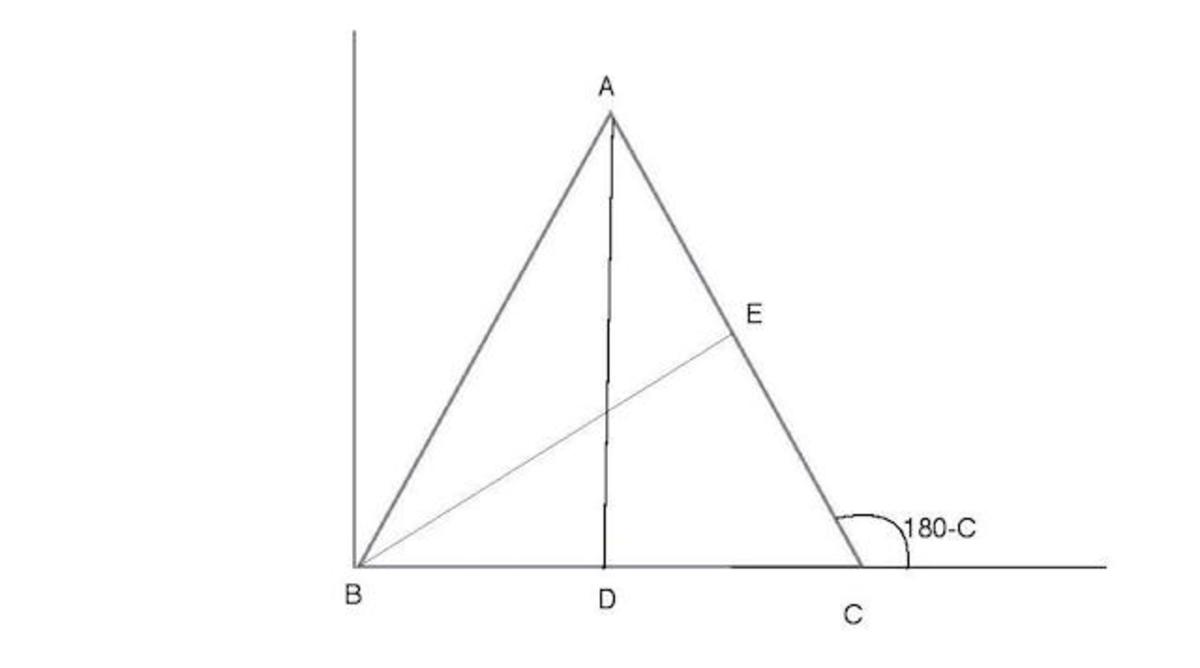Need to draw, Part 2
The medians A D and B E of triangle A B C are perpendicular. Find the length of A B if B C = 3 cm and A C = 4 cm .
This section requires Javascript.
You are seeing this because something didn't load right. We suggest you, (a) try
refreshing the page, (b) enabling javascript if it is disabled on your browser and,
finally, (c)
loading the
non-javascript version of this page
. We're sorry about the hassle.
3 solutions
Solution using trigonometry:
Let G be the centroid of Δ A B C and F be the midpoint of A B .
As A D ⊥ B E , F is the circumcentre of (right) Δ A B G . ⟹ 2 A B = A F = F B = F G ⟹ C F = 2 3 A B
Now, we have the following equations (which hold in general): 4 ⋅ C F 2 A B 2 = A C 2 + B C 2 + 2 A C ⋅ B C ⋅ cos ∠ B C A = A C 2 + B C 2 − 2 A C ⋅ B C ⋅ cos ∠ B C A
Now, using the above three equations and the given values, we have
A B = 5
Mine was a vector approach! I considered B at the origin and side B C along the x-axis.

The idea is to find B E and A D and then use the fact that B E . A D = 0 since, the medians are perpendicular.
Let O denote the origin. Therefore, from the diagram we can write:
-
O B = 0
-
B C = 3 i ^ ( length BC = 3 cm )
-
B D = 2 3 i ^
Now the task is to find A D and B E .
From Triangle Law of Addition of Vectors we can write :
B C + A C = B A
But A C = − 4 c o s C i ^ + 4 s i n C j ^
Therefore B A = ( 3 − 4 c o s C ) i ^ + 4 s i n C j ^
But our aim is to find A D .
A D = B A − B D ⇒ A D = ( 2 − 3 + 4 c o s C ) i ^ − 4 s i n C j ^
Similarly B E = B C + E C ⇒ B E = ( 3 − 2 c o s C ) i ^ + 2 s i n C j ^
Now using the given information- A D . B E = 0 we get:
c o s C = 6 5
Now we can apply Cosine Rule upon using which we get
A B = 5
Solution using coordinate geometry:
Let the medians intersect at the origin.
AD is on the x-axis and BE is on the y-axis.
A = ( − a , 0 ) and B = ( − b , 0 )
Since AD and BE are medians, if A is a units to the left of the y-axis, then C is a units to the right. Similarly, C is b units above the x-axis.
C = ( a , b )
By Pythagoras' Theorem, a 2 + 4 b 2 = 9 4 a 2 + b 2 = 1 6
Adding both equations and dividing by 5, a 2 + b 2 = 5 ⇒ A B = 5